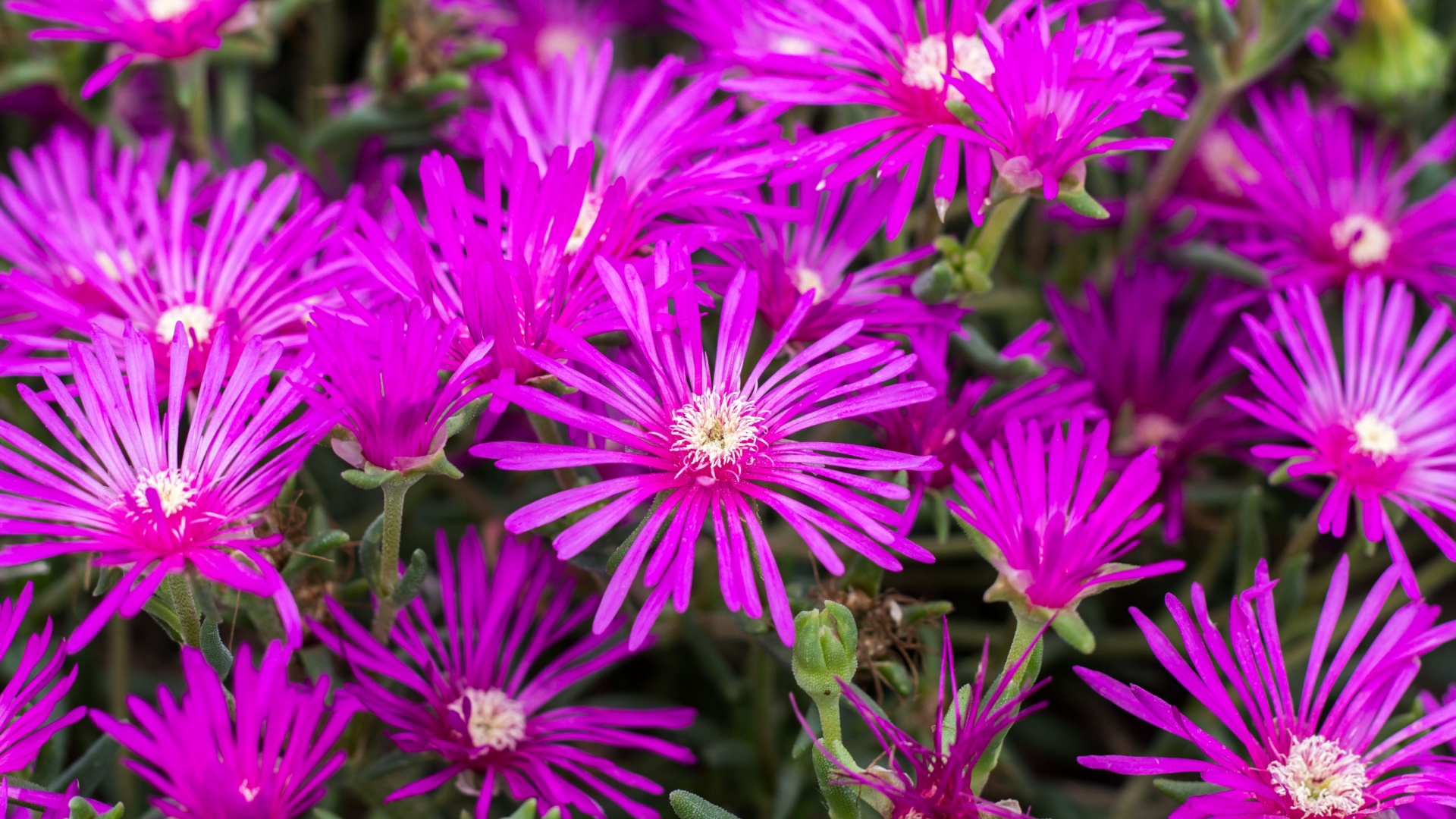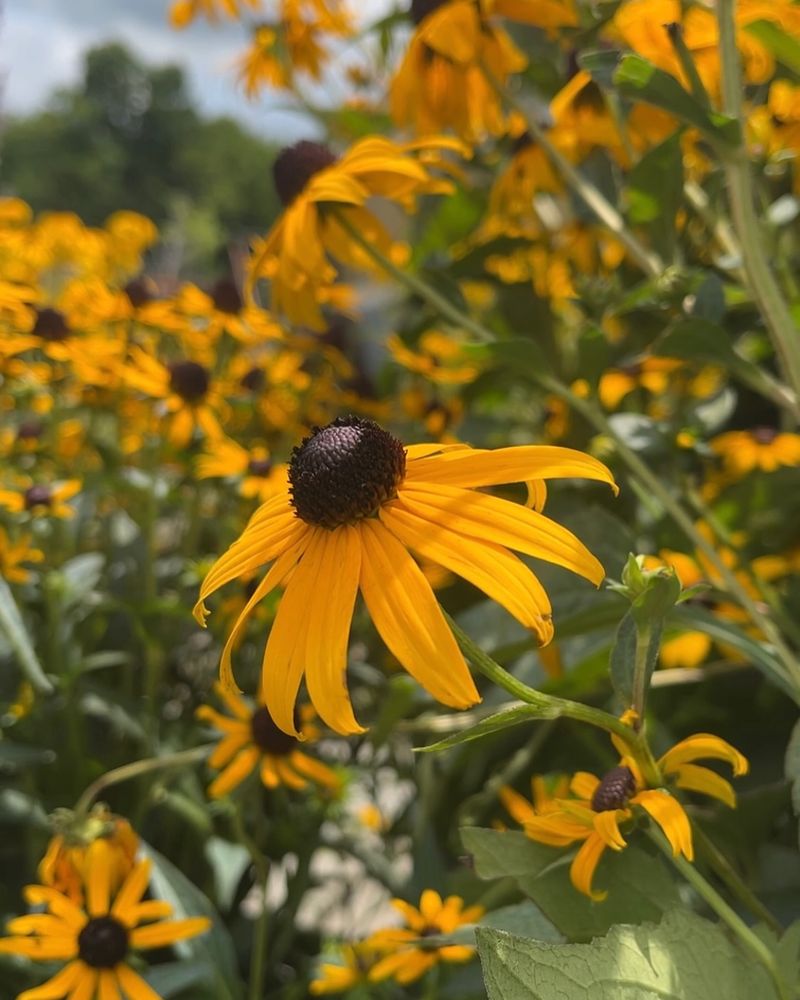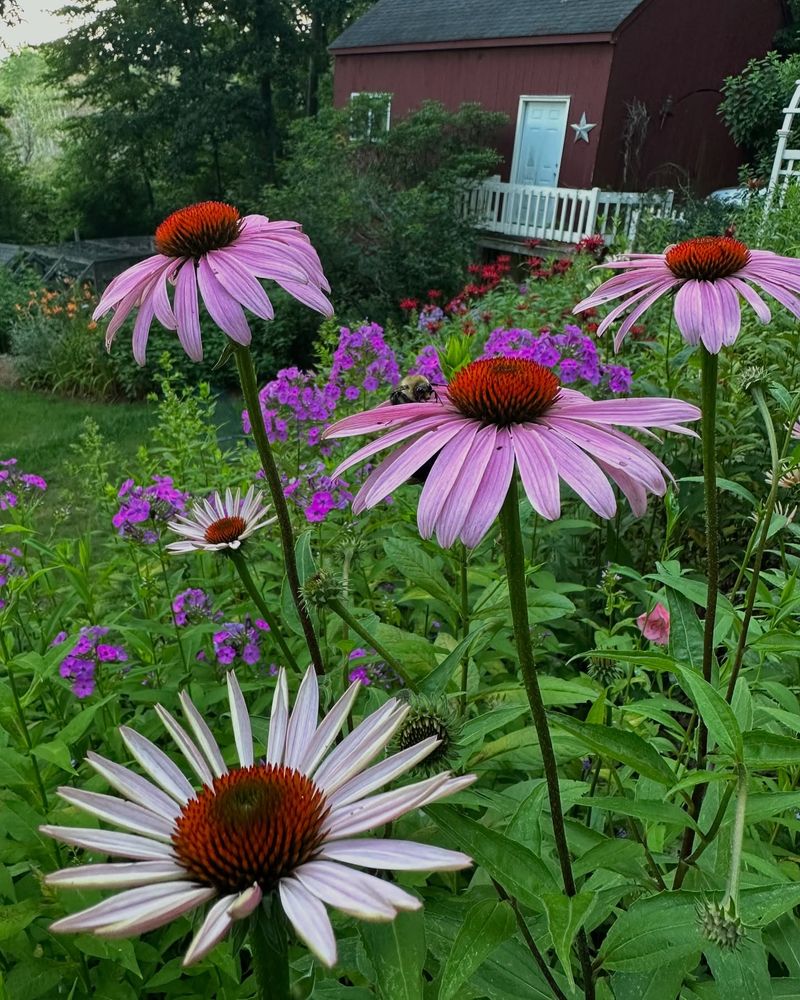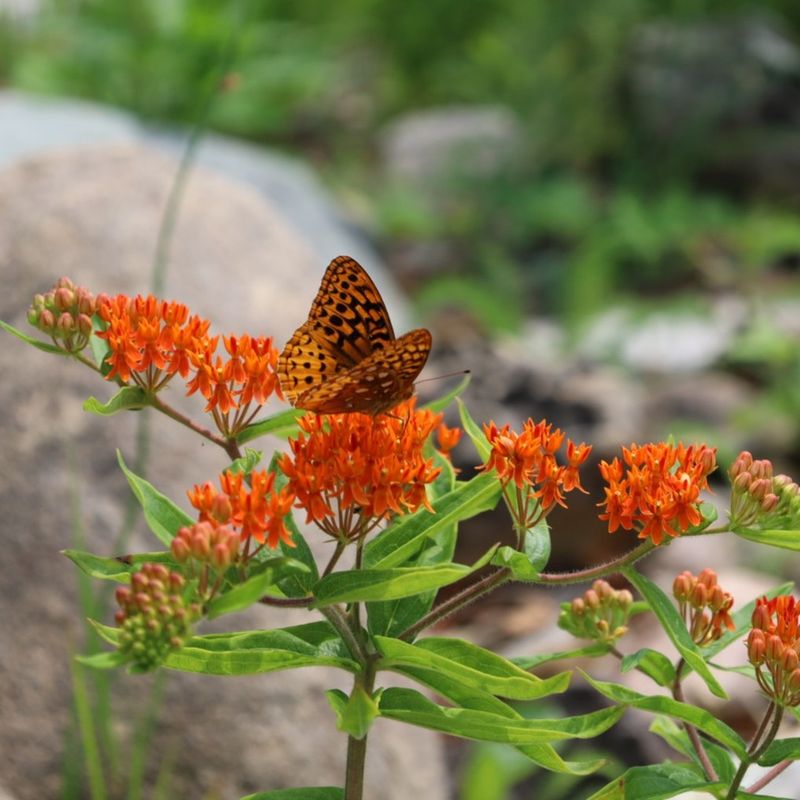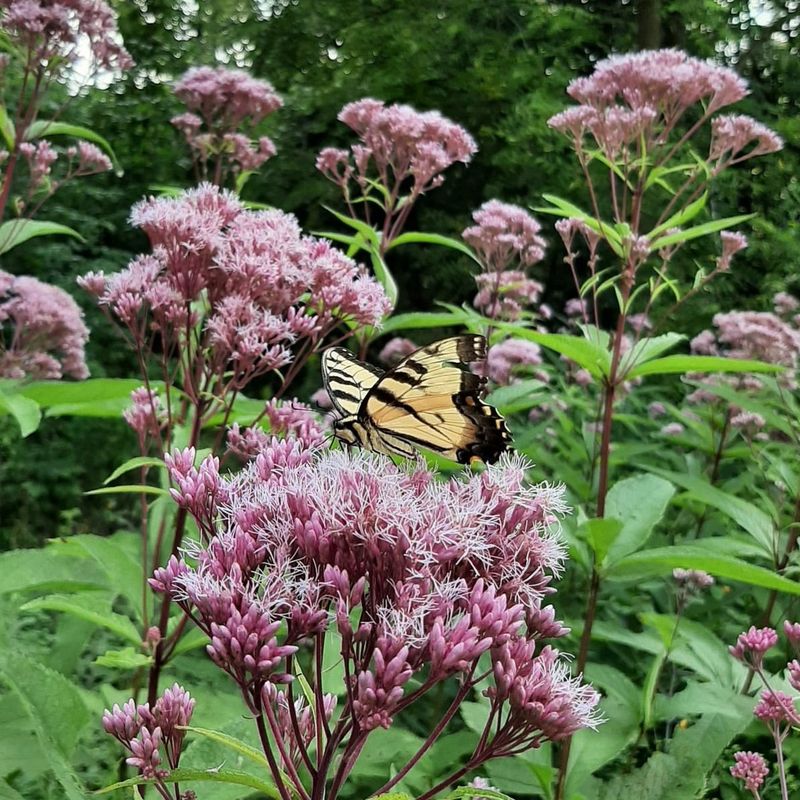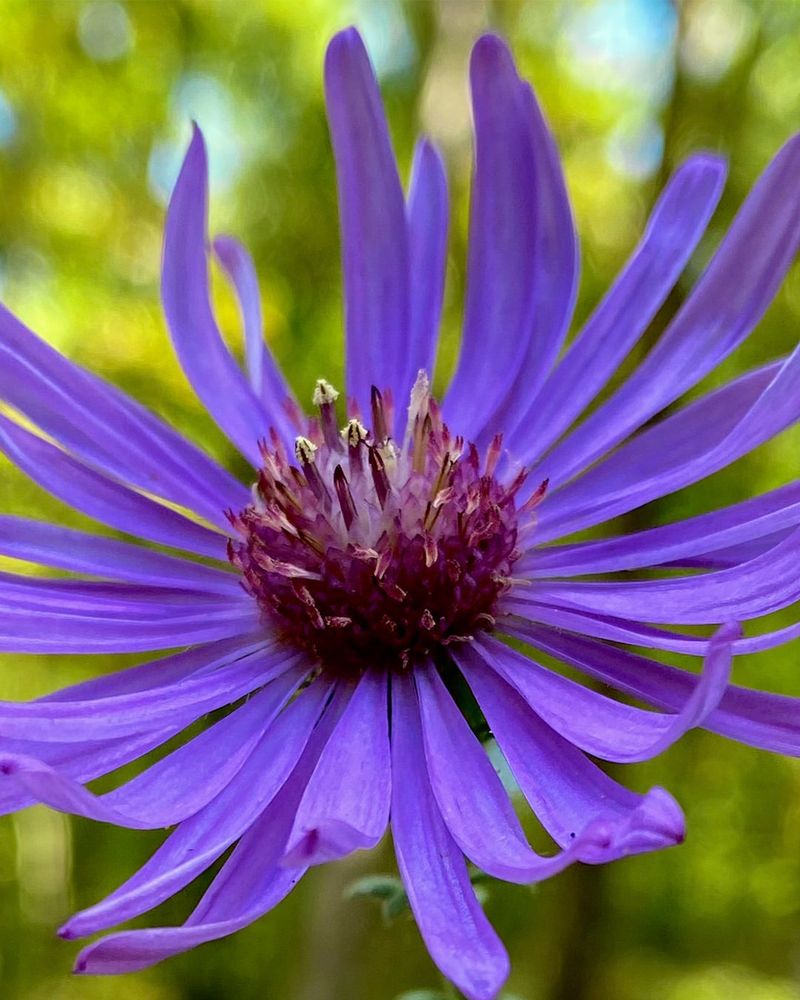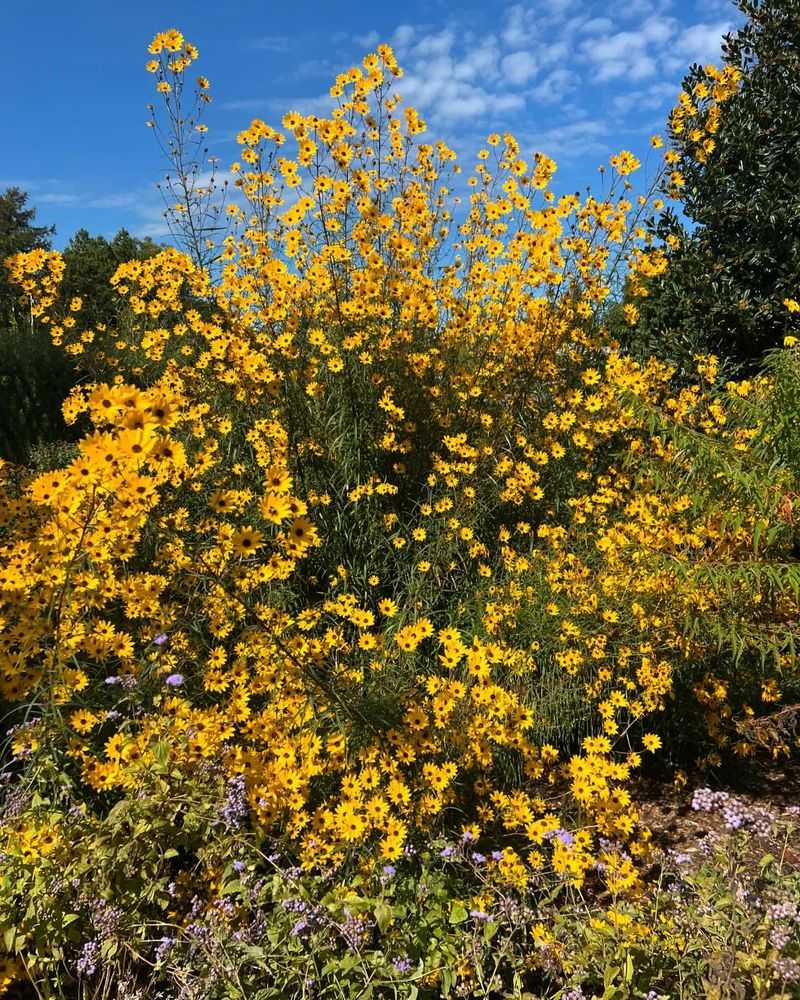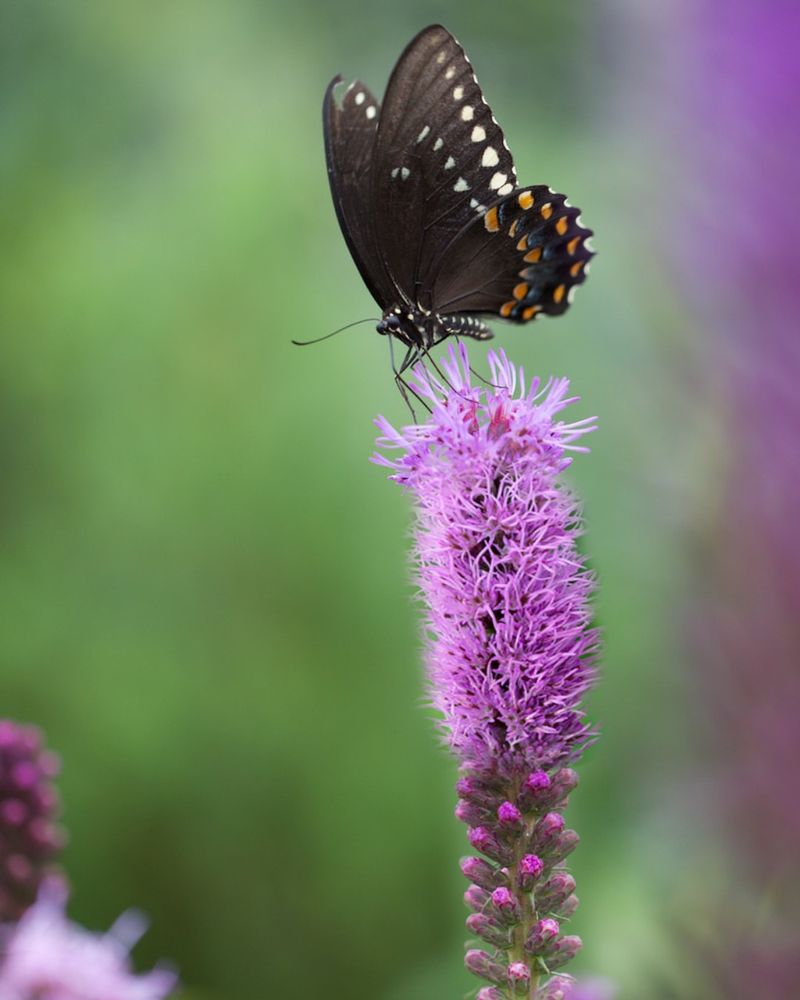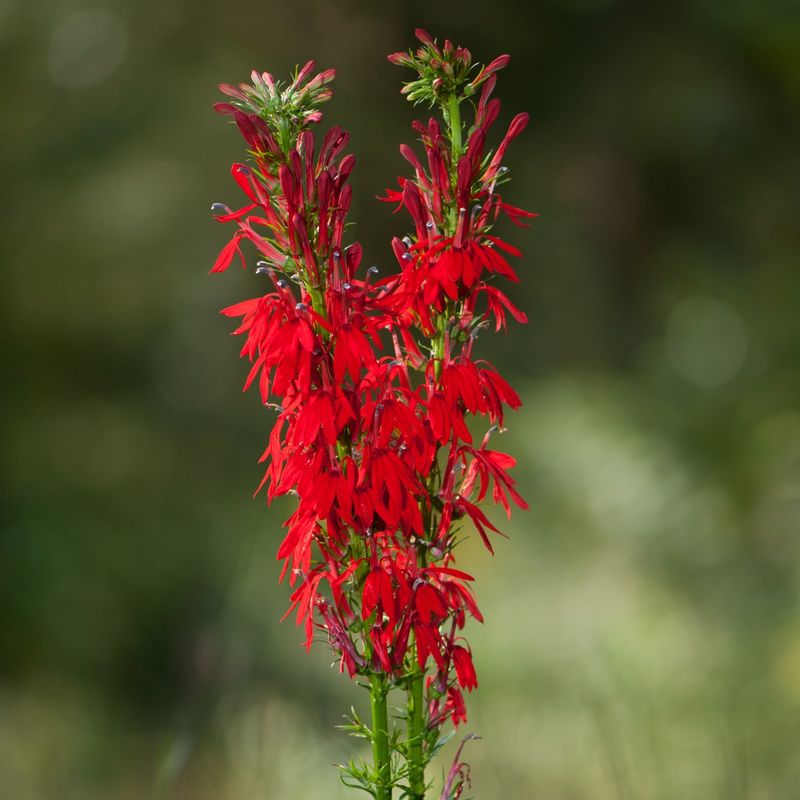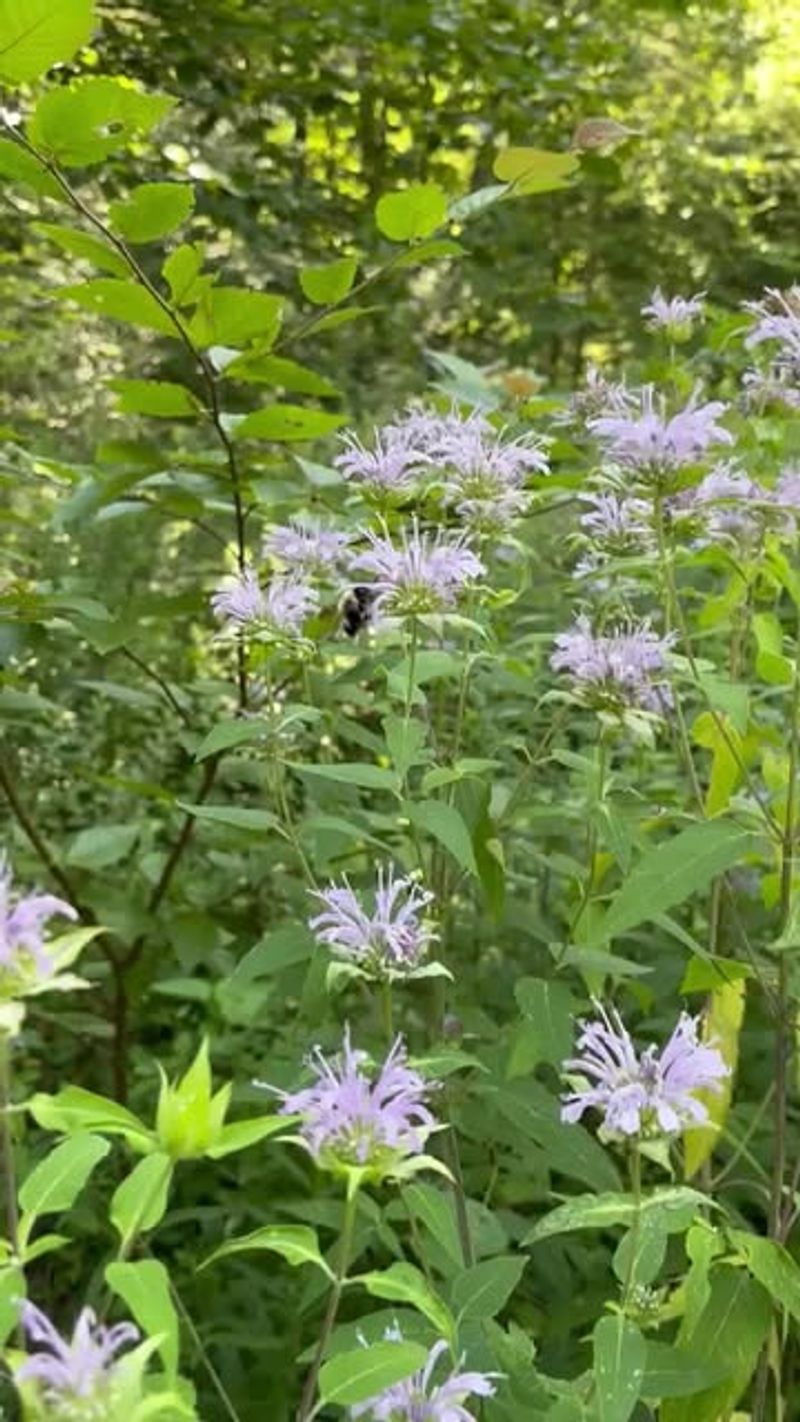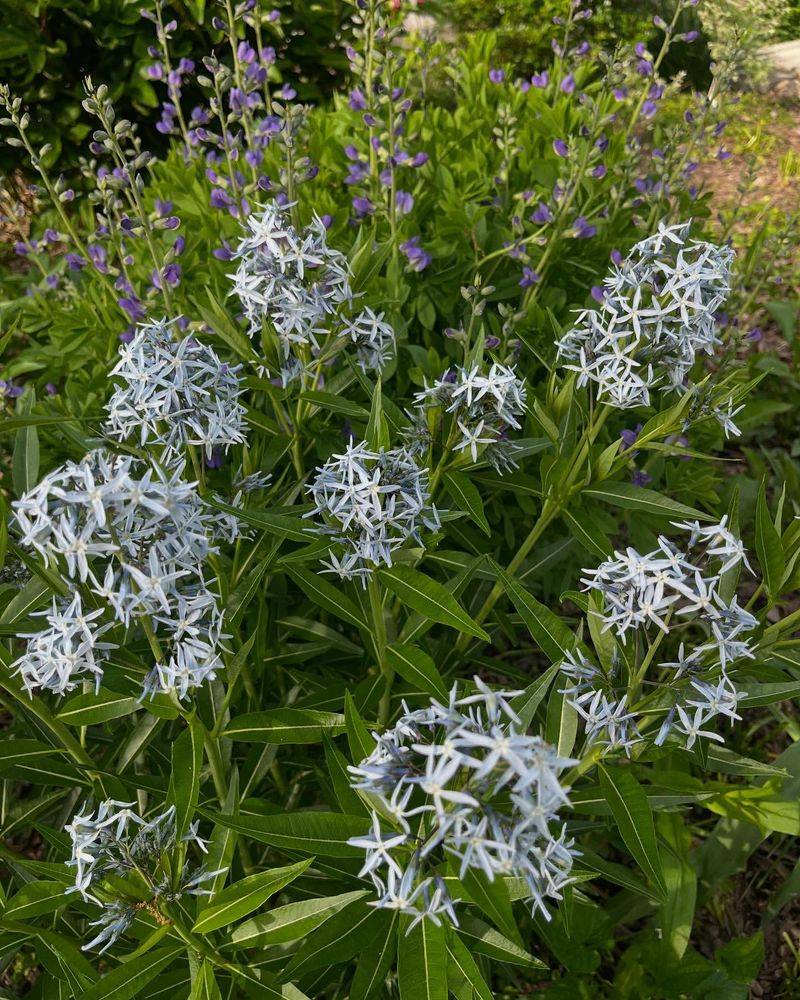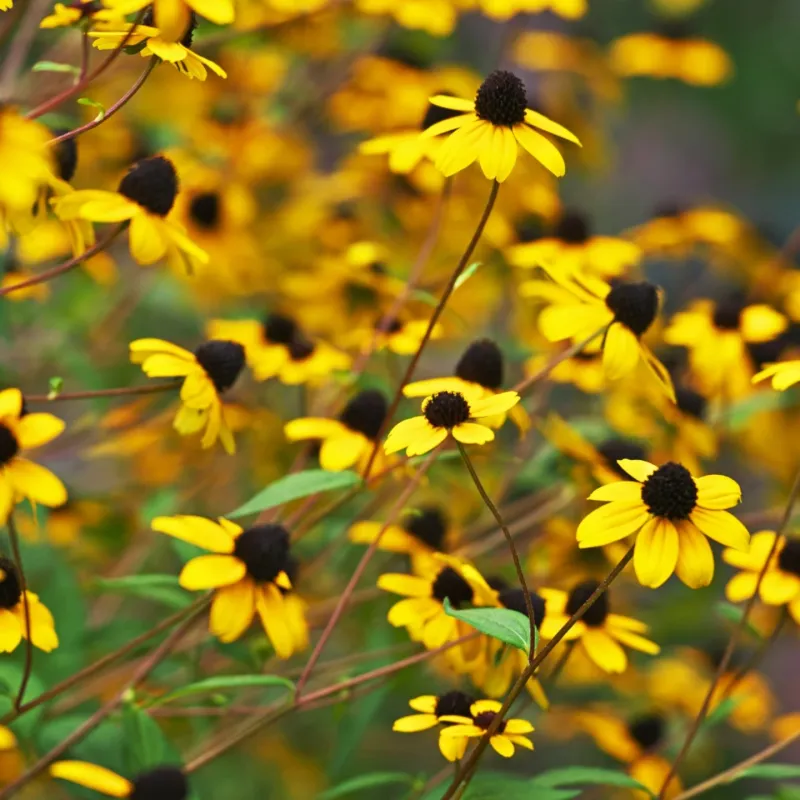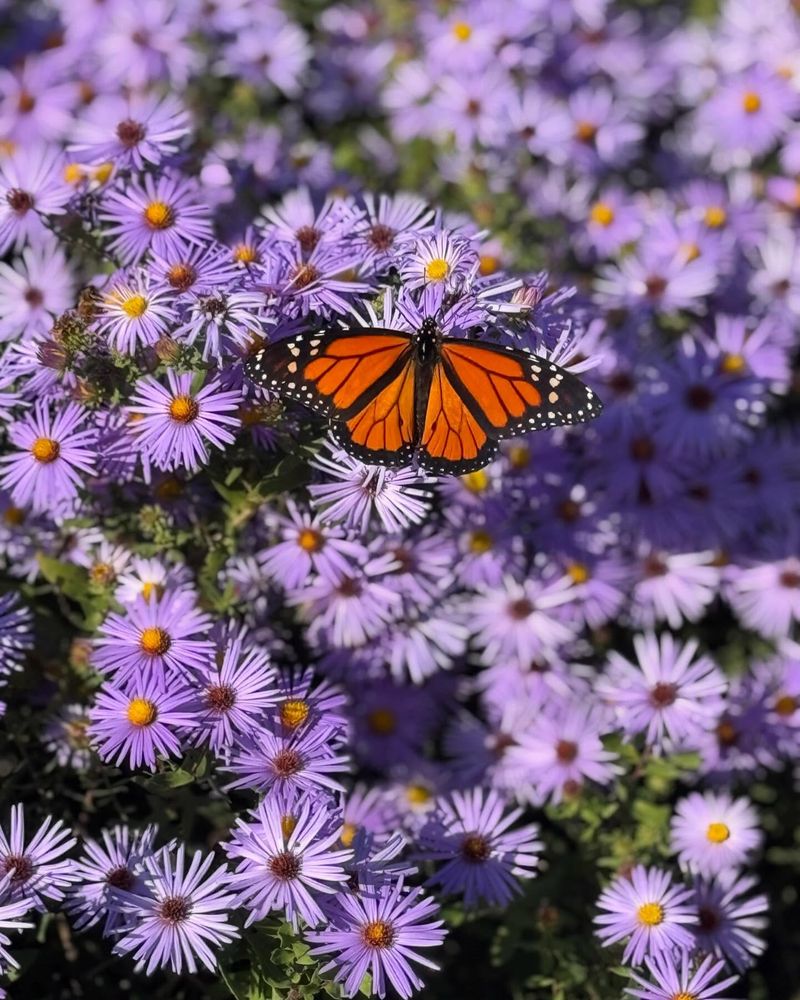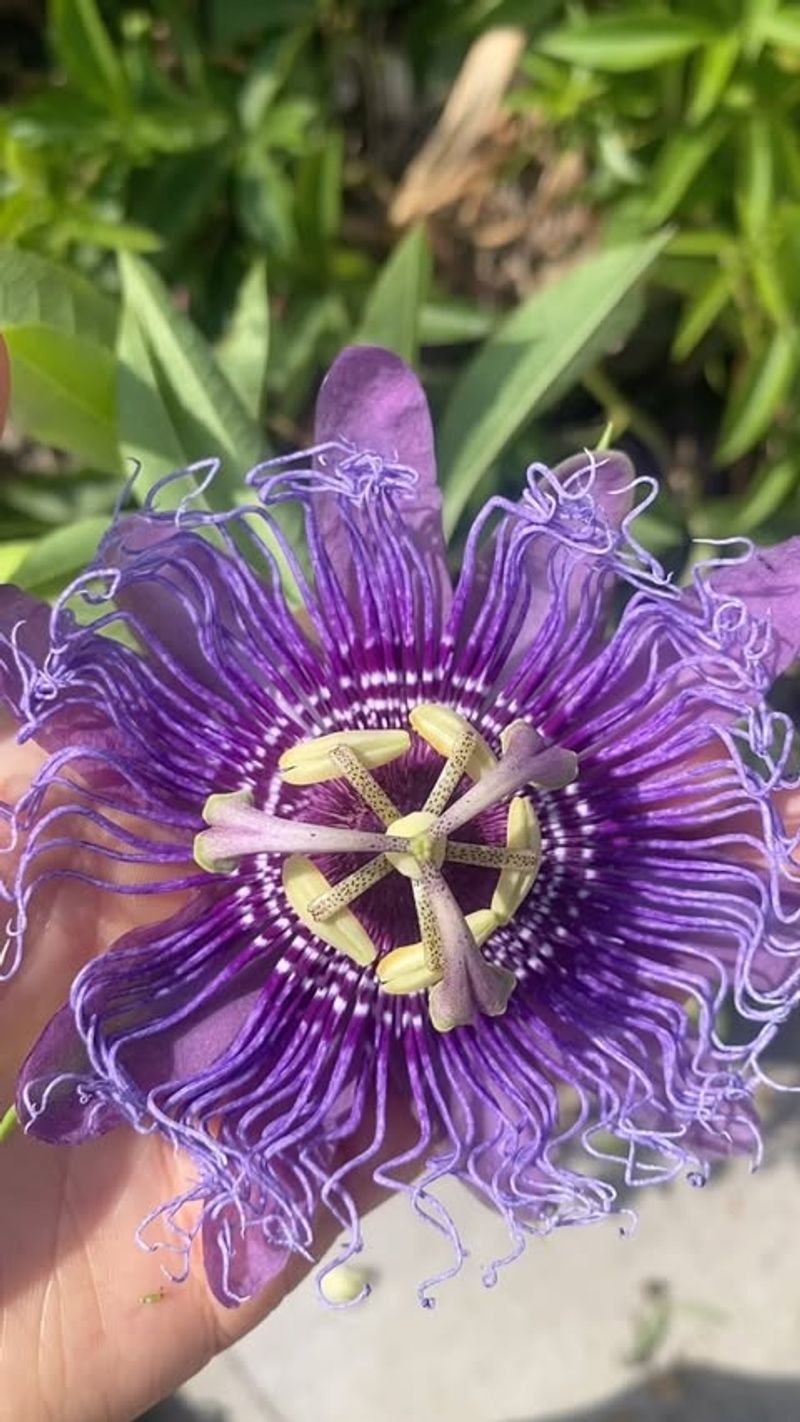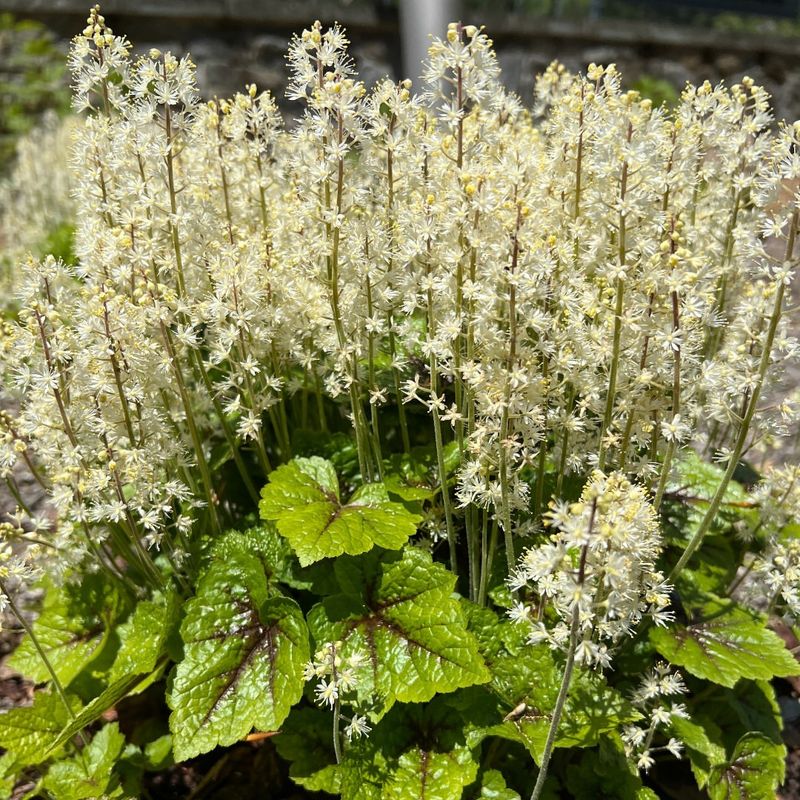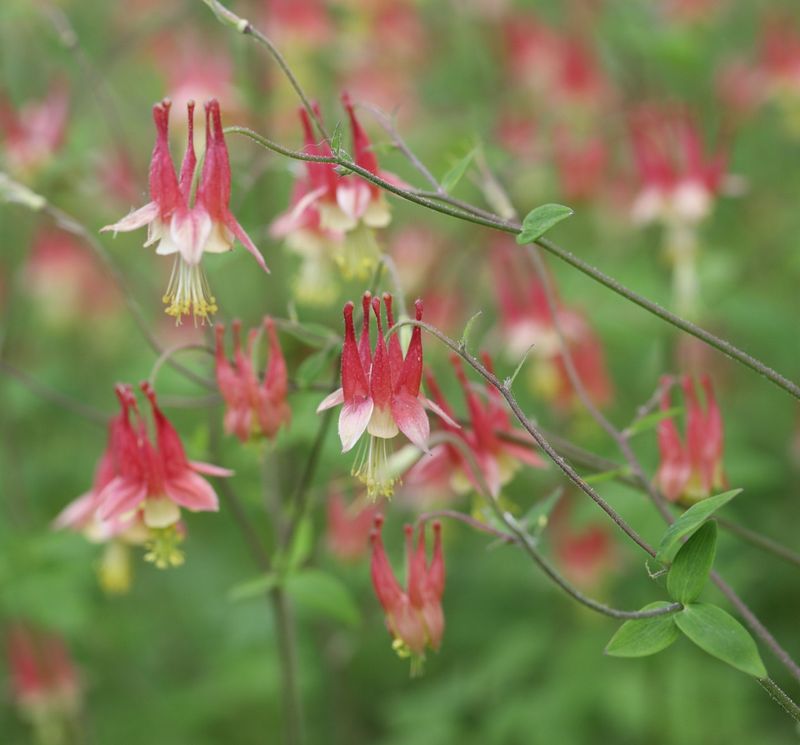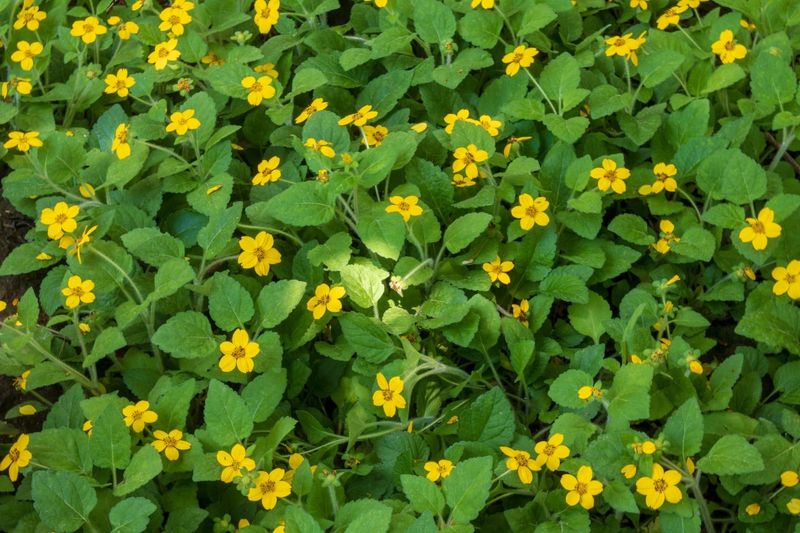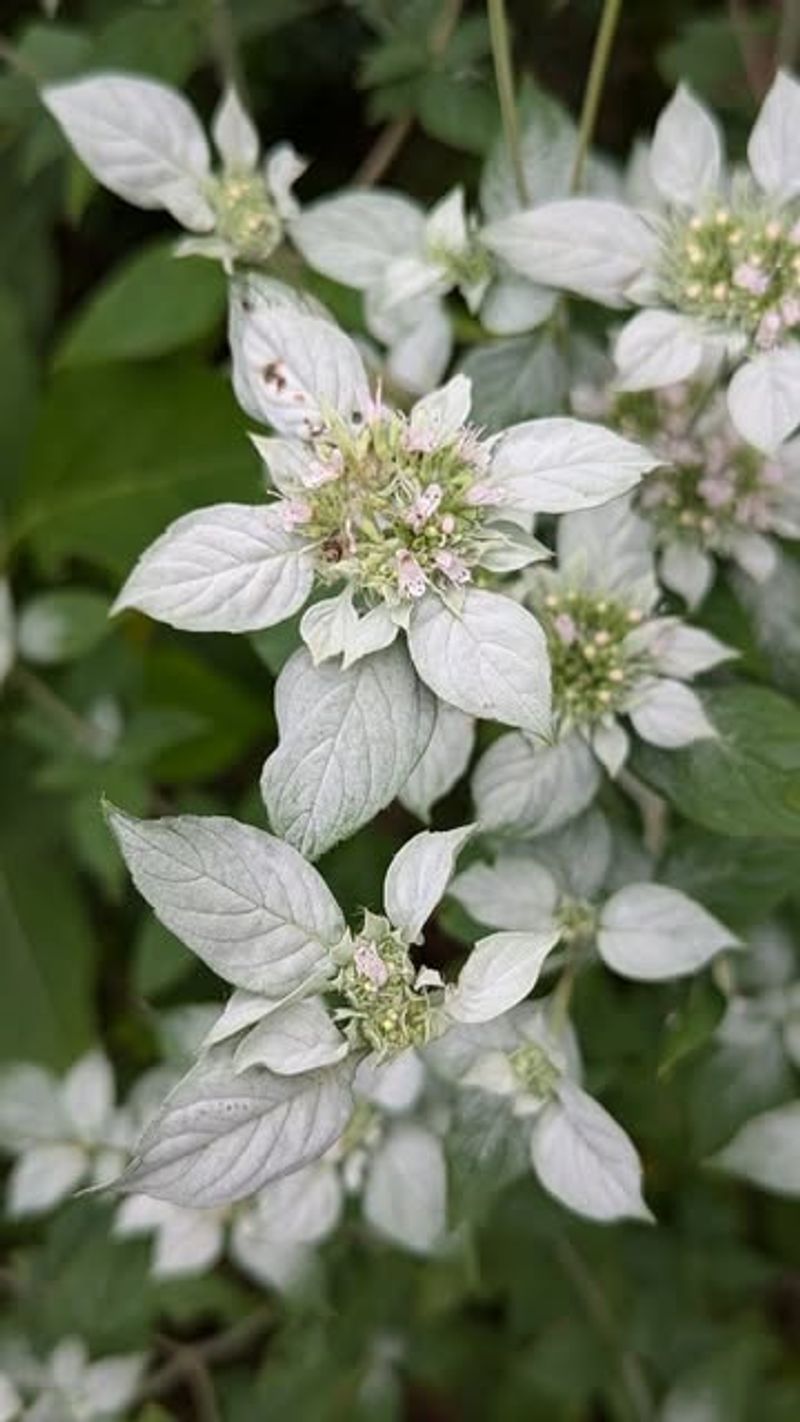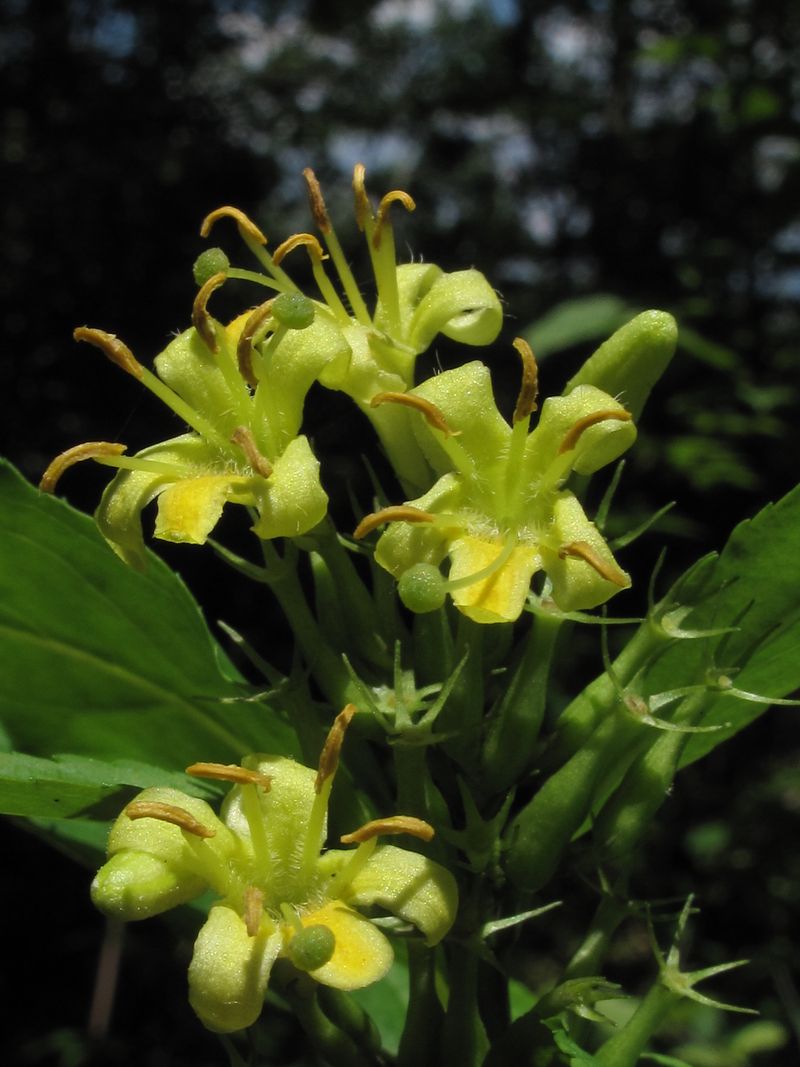Georgia gardens truly shine in August when native plants thrive despite the summer heat. These local beauties have adapted to our climate over thousands of years, making them perfect low-maintenance additions that support local wildlife.
Adding these native plants to your garden not only saves you time and water but also creates a beautiful slice of Georgia’s natural heritage right in your backyard.
1. Black-Eyed Susan (Rudbeckia hirta)
Golden sunshine in flower form! These cheerful yellow blooms with dark centers brighten any garden space with minimal fuss. Native to Georgia’s meadows, they’ve evolved to handle our hot summers without extra watering once established.
Black-Eyed Susans attract butterflies and provide seeds for birds in fall. They self-seed readily, creating natural colonies that return year after year without any work from you.
2. Purple Coneflower (Echinacea purpurea)
Standing tall with distinctive drooping petals, Purple Coneflower creates a magical display that lasts for months. Butterflies can’t resist these pink-purple blooms, and goldfinches love their seedheads in fall.
Extremely drought-tolerant once established, these native perennials laugh at Georgia’s August heat. Plant them in groups for best visual impact, and enjoy watching wildlife visitors while you relax instead of watering.
3. Butterfly Weed (Asclepias tuberosa)
Monarch butterflies throw parties around these vibrant orange blooms! A type of milkweed native to Georgia, Butterfly Weed serves as crucial habitat for monarch caterpillars while adding fiery color to summer gardens.
Deep taproots make this plant incredibly drought-resistant once established. No fertilizer needed—in fact, it prefers poor soil! Simply plant in full sun, then stand back and watch the butterfly magic happen all August long.
4. Joe Pye Weed (Eutrochium purpureum)
Reaching for the sky with majestic height, Joe Pye Weed creates a dramatic backdrop in any garden. The fluffy pink-purple flower clusters appear in late summer, creating a haven for butterflies and native bees.
Despite its impressive size (up to 7 feet tall!), this native requires surprisingly little care. Plant it in moist areas where water naturally collects after rain—it’ll thrive there while other plants might struggle.
5. Georgia Aster (Symphyotrichum georgianum)
Named for our state, this rare native wildflower deserves a special spot in every Georgia garden. The vibrant purple-blue blooms appear just when most flowers are fading, creating an autumn spectacle that’s truly showstopping.
Georgia Aster thrives in full sun and well-drained soil with minimal care. Once established, it shrugs off drought conditions that would wilt lesser plants. By growing this beauty, you’re also helping preserve a species that’s becoming increasingly rare in the wild.
6. Swamp Sunflower (Helianthus angustifolius)
Don’t let the name fool you—Swamp Sunflower brings sunshine to any garden spot, not just wet areas! In August, these cheerful yellow blooms begin their spectacular show, lasting well into fall when other flowers have faded.
Growing up to 6 feet tall, they create a magnificent golden backdrop that attracts goldfinches and butterflies. Despite their height, no staking is needed—these native sunflowers have evolved strong stems to withstand Georgia’s summer storms.
7. Blazing Star (Liatris spicata)
Like purple fireworks frozen in time, Blazing Star sends up dramatic spikes of fluffy flowers that bloom from top to bottom. Butterflies flock to these unique blooms, creating a living garden display.
Tough as nails, these native perennials laugh at Georgia’s August heat and humidity. Their deep roots reach far into the soil, finding water when other plants struggle. For a truly magical garden moment, plant them alongside Black-Eyed Susans for a purple-and-gold combination that dazzles.
8. Cardinal Flower (Lobelia cardinalis)
Hummingbirds perform aerial acrobatics around these brilliant red spikes! Cardinal Flower creates stunning vertical interest in August gardens with its intense crimson blooms that seem to glow from within.
Unlike many natives that prefer dry conditions, this beauty thrives in those troublesome damp spots where other plants rot. Perfect for rain gardens or areas that stay moist after storms. The dramatic color and wildlife activity make this plant worth any extra water it might need.
9. Wild Bergamot (Monarda fistulosa)
Lavender pom-pom flowers dance atop aromatic foliage, creating a sensory delight in the August garden. Also called Bee Balm, this native plant lives up to its name by attracting countless bees, butterflies, and even hummingbirds.
The fragrant leaves release a minty-citrus scent when brushed against, adding another dimension to garden enjoyment. Remarkably disease-resistant compared to non-native Monarda varieties, Wild Bergamot stands strong through Georgia summers with minimal care.
10. Eastern Bluestar (Amsonia tabernaemontana)
Spring’s soft blue stars give way to spectacular golden fall foliage, making Eastern Bluestar a two-season wonder. The feathery foliage creates a beautiful textural element all summer long, requiring zero maintenance to look fantastic.
Deer and rabbits avoid this plant, making it perfect for unprotected gardens. Once established, Eastern Bluestar needs no supplemental water, even during August’s driest spells. Form a dreamy blue cloud by planting several together in a sunny or partially shaded spot.
11. Brown-Eyed Susan (Rudbeckia triloba)
Smaller and more delicate than its famous cousin, Brown-Eyed Susan creates a cloud of tiny yellow flowers that dance in the slightest breeze. The abundant blooms create a cheerful display that lasts from midsummer through fall.
Incredibly adaptable, this short-lived perennial self-seeds readily, ensuring your garden is never without its sunny presence. Birds adore the seeds, and the plant’s compact size makes it perfect for garden borders. Thrives in full sun to partial shade with almost no care.
12. Aromatic Aster (Symphyotrichum oblongifolium)
Late summer brings a purple haze of tiny daisy-like blooms that bees and butterflies simply can’t resist. The name comes from the pleasant scent released when the foliage is crushed—a lovely surprise for gardeners.
Growing in a tidy mound about 2 feet tall and wide, Aromatic Aster stays compact without pruning. Extremely drought-tolerant, it thrives in poor soil and full sun—conditions that would stress most non-native plants. The dense growth habit also helps suppress weeds naturally.
13. Coral Honeysuckle (Lonicera sempervirens)
Unlike its invasive Japanese cousin, this native honeysuckle behaves beautifully while providing tubular coral-red flowers that hummingbirds find irresistible. The semi-evergreen vines add vertical interest to any garden space.
Coral Honeysuckle climbs gracefully over fences or trellises with minimal support needed. The red berries that follow the flowers feed native birds. Unlike many vines that require constant pruning, this well-mannered climber stays relatively compact without taking over the garden.
14. Passionflower (Passiflora incarnata)
Otherworldly purple flowers look like something from a science fiction movie! Native passionflower creates conversation-starting blooms while serving as essential habitat for Gulf Fritillary butterflies.
The unusual fruits that follow (maypops) are edible and historically used for medicine. This vigorous vine grows quickly with no care needed—perfect for covering fences or arbors. Though it spreads by runners, it’s easily controlled and worth any minor maintenance for its extraordinary flowers.
15. Foamflower (Tiarella cordifolia)
Bringing charm to shady spots, Foamflower creates frothy white blooms above attractive maple-shaped leaves. The foliage often develops beautiful burgundy markings, providing interest even when not in bloom.
Perfect for those difficult dry shade areas under trees where few plants thrive. Forms a beautiful groundcover that suppresses weeds naturally. Deer typically avoid this native woodland plant, making it ideal for unfenced gardens in suburban or rural settings.
16. Wild Columbine (Aquilegia canadensis)
Dancing red and yellow flowers hang like tiny lanterns on delicate stems, creating woodland magic in partly shaded gardens. Hummingbirds perform aerial displays around these unique blooms in early summer.
The blue-green foliage remains attractive even after flowering ends. Wild Columbine self-seeds gently, creating natural drifts without becoming invasive. Unlike fussy hybrid columbines, our native species resists leaf miners and other pests that often plague garden varieties.
17. Green and Gold (Chrysogonum virginianum)
Low-growing mats of cheerful yellow flowers appear above emerald foliage, creating a living carpet in woodland gardens. The star-shaped blooms begin in spring but continue sporadically through summer and into fall.
One of the few native groundcovers that thrives in partial shade, Green and Gold slowly spreads to form weed-suppressing colonies. The semi-evergreen foliage provides winter interest when many perennials disappear. Perfect for planting beneath trees or along shaded pathways.
18. Georgia Mint (Pycnanthemum incanum)
Silvery foliage topped with tiny white flowers creates a shimmering effect in the August garden. The aromatic leaves release a refreshing minty scent when touched—a delightful garden surprise!
Pollinators go absolutely crazy for this native mint relative. On summer days, the flower heads buzz with activity as native bees, butterflies, and beneficial wasps gather nectar. Unlike aggressive non-native mints, Georgia Mint behaves well in gardens, forming tidy clumps without running rampant.
19. Southern Bush Honeysuckle (Diervilla sessilifolia)
Yellow trumpet-shaped flowers attract hummingbirds and butterflies to this adaptable native shrub. Not actually a true honeysuckle, this Georgia native offers similar wildlife benefits without invasive tendencies.
Brilliant red-orange fall color provides multi-season interest. Thriving in conditions that challenge other plants, Southern Bush Honeysuckle grows beautifully in both sun and shade. Its compact size (3-4 feet) makes it perfect for modern landscapes where space is limited.
20. Sweet Pepperbush (Clethra alnifolia)
Fragrance fills the August air when Sweet Pepperbush blooms! The bottle-brush white flowers release a honey-sweet scent that carries across the garden, drawing humans and butterflies alike.
Perfect for those tricky wet spots where other shrubs fail. The glossy foliage turns golden-yellow in fall, extending the season of interest. This adaptable native shrub thrives in sun or shade, making it versatile for various garden locations.

